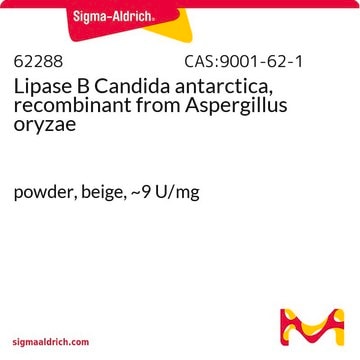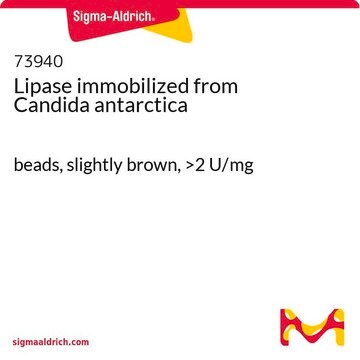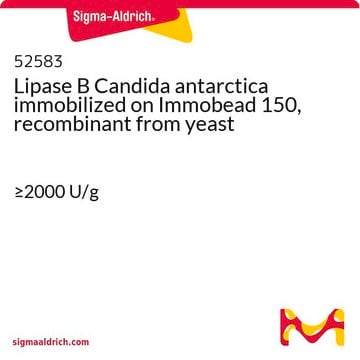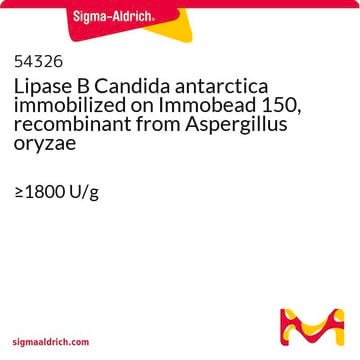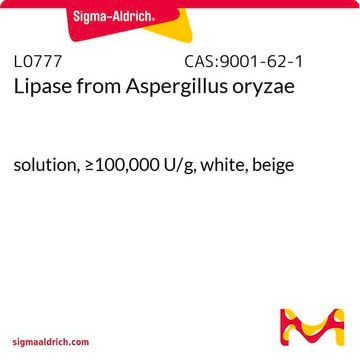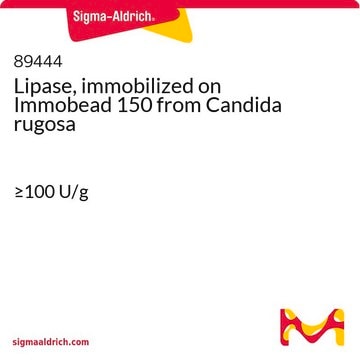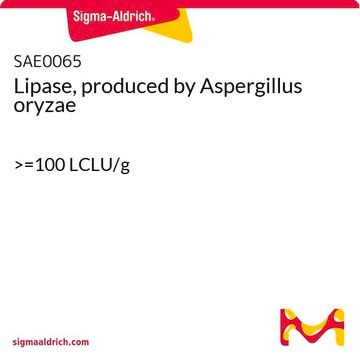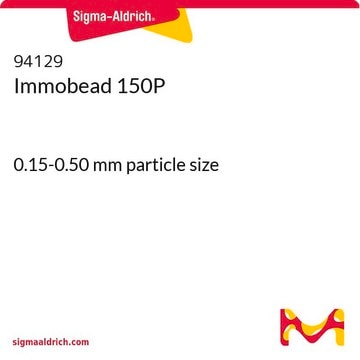L4777
Lipase acrylic resin
≥5,000 U/g, recombinant, expressed in Aspergillus niger
Synonym(s):
Novozyme 435
About This Item
Recommended Products
recombinant
expressed in Aspergillus niger
form
solid
specific activity
≥5,000 U/g
greener alternative product characteristics
Waste Prevention
Design for Energy Efficiency
Learn more about the Principles of Green Chemistry.
sustainability
Greener Alternative Product
matrix
macroporous acrylic resin
application(s)
diagnostic assay manufacturing
greener alternative category
storage temp.
2-8°C
InChI
1S/C11H9N3O2.Na/c15-8-4-5-9(10(16)7-8)13-14-11-3-1-2-6-12-11;/h1-7,16H,(H,12,14);/q;+1/b13-9-;
InChI key
QWZUIMCIEOCSJF-CHHCPSLASA-N
Related Categories
General description
Application
- as a catalyst to carry out the esterification of pLACT with butyric acid
- as an additive in fully hydrogenated canola oil (FHCO) and high oleic sunflower oil (HOSO) blend for enzymatic interesterification
- to study its effect on the degree of oleic acid conversion upon esterification
Biochem/physiol Actions
signalword
Danger
hcodes
pcodes
Hazard Classifications
Resp. Sens. 1
Storage Class
11 - Combustible Solids
wgk_germany
WGK 1
flash_point_f
Not applicable
flash_point_c
Not applicable
Certificates of Analysis (COA)
Search for Certificates of Analysis (COA) by entering the products Lot/Batch Number. Lot and Batch Numbers can be found on a product’s label following the words ‘Lot’ or ‘Batch’.
Already Own This Product?
Find documentation for the products that you have recently purchased in the Document Library.
Customers Also Viewed
Our team of scientists has experience in all areas of research including Life Science, Material Science, Chemical Synthesis, Chromatography, Analytical and many others.
Contact Technical Service